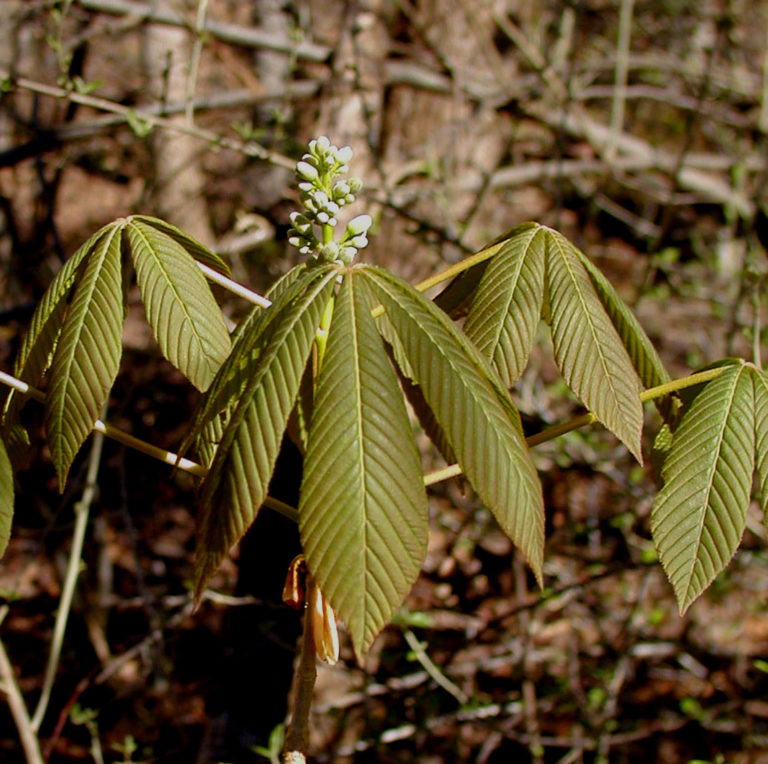Aesculus sylvatica, or Painted Buckeye, is a shrub about 6 feet tall commonly observed along streams and on open forest slopes of the Piedmont counties of NC and other Southeastern states. Painted Buckeye’s appeal lies in the variety of subtle colors displayed by the tender leaves as they emerge in an otherwise brown, woody, winter landscape. These unfurl to become palmately compound, medium green leaves. The yellowish flowers, which are nectar sources for hummingbirds and butterflies such as the Eastern Tiger Swallowtail, are not far behind. Painted Buckeye is first to emerge in the bottomlands, and also first to senesce, often dropping its foliage in August. This species is all the more prominent because it and other members of the Buckeye family are not consumed by deer, even when it is the only tender green tissue available in the woods. Although this shrub thrives naturally in the bottomlands, it also grows very well on open forest slopes and in the upland garden, tolerating full shade as well as full sun — but benefiting from afternoon shade in these hot summers.
NURSERY HOURS
Wednesday: 10-4 Thursday: 10-6 Friday-Saturday: 10-4 Sunday: 12-4
Aesculus sylvatica

Key Info
Scientific Name: Aesculus sylvatica W. Bartram
Common Names: Painted Buckeye, Dwarf Buckeye
Family Names: Sapindaceae (Soapberry Family)
Plant Type: Tree / Shrub
Leaf Retention: Deciduous
Bloom Times: Apr
Flower Color: Yellowish
Special Characteristics: Reported to be deer resistant., Attracts bees, Attracts butterflies, Shade tolerant, Showy fruit
Additional Info
Habit: A rhizomatous understory shrub with a rounded, open crown.
Height: 12'
Spread: 6'
Soil Conditions: Average to moist, slightly acid, humusy.
Leaves: Opposite, palmately compound with 5 leaflets, fine-toothed, serrated, 4-6" long, emerging early (mid March).
Flowers (or reproductive structures: Greenish yellow flowers in a terminal, erect cluster, each with 4 petals.
Fruit: light brown, thin-walled 1-3" dehiscent capsule w/ 1-3 shiny inedible nuts inside called buckeyes, maturing in late summer to early fall
Natural Distribution: Common in rich bottomland forests. Virginia/Tennessee south to Georgia, Zones 5-8
USDA Hardiness Zone: 5 to 8
USDA Wetland Indicator Status in NC: FAC (FACU on Coastal Plain)
Pollination: Bees, butterflies, other insects
Wildlife Connections: The flowers are nectar sources for hummingbirds and butterflies, such as the Eastern Tiger Swallowtail. Seeds and young shoots are poinsonous and are avoided by most wildlife (though not squirrels).
Propagation: By seed.
